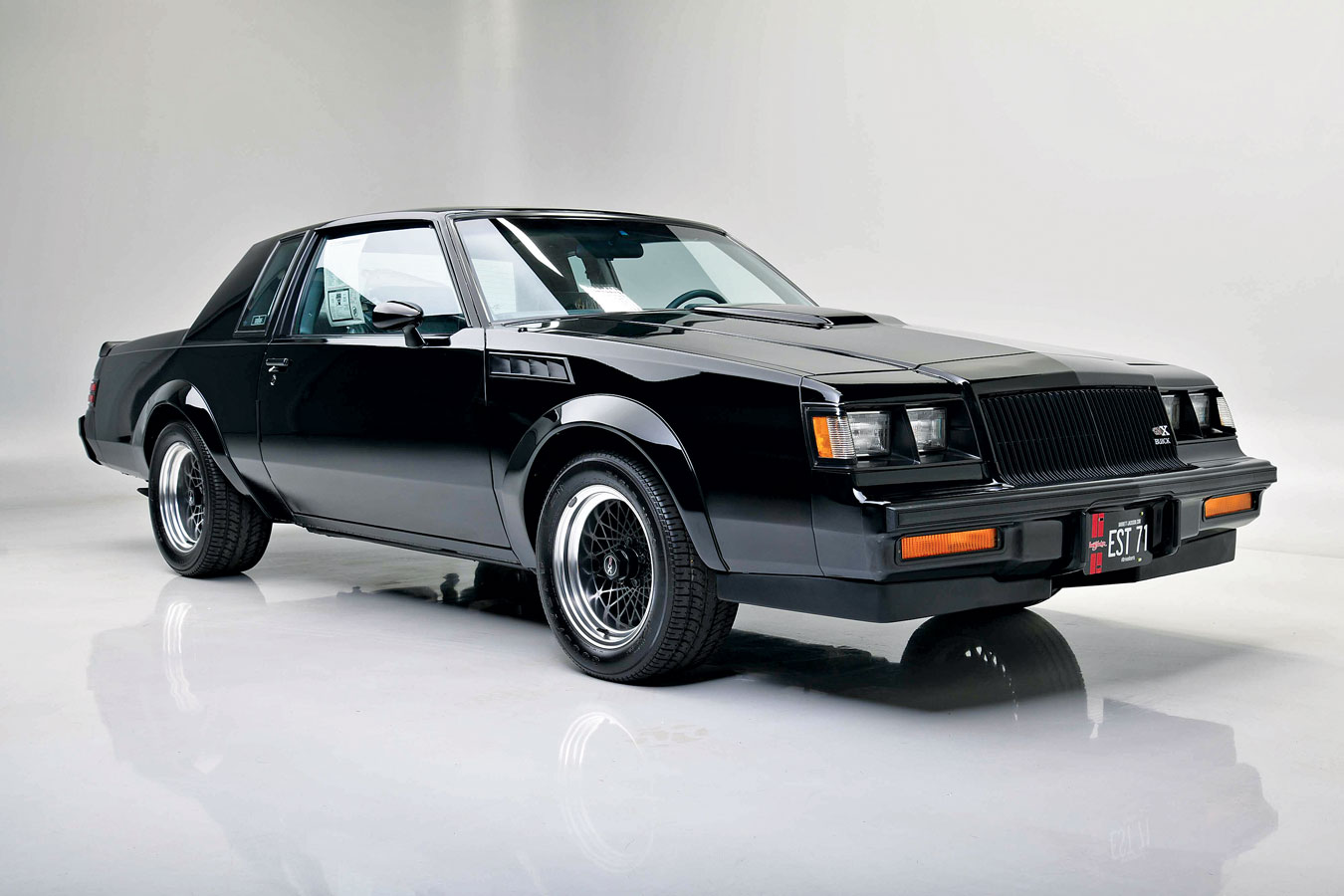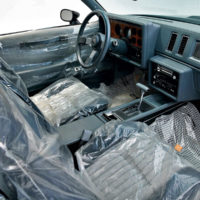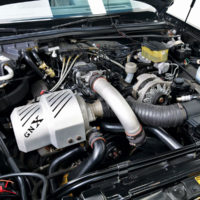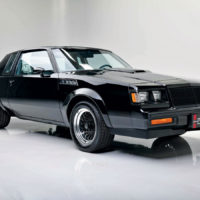SCM Analysis
Detailing
| Vehicle: | 1987 Buick GNX |
| Years Produced: | 1987 |
| Number Produced: | 547 |
| SCM Valuation: | $94,000 |
| Tune Up Cost: | $500 |
| Chassis Number Location: | VIN plate at base of windshield |
| Engine Number Location: | Pad on front of engine |
| Club Info: | GNX Registry |
| Website: | http://www.gnxregistry.org |
| Alternatives: | 1982-86 Buick Grand National, 1989 Pontiac Turbo Trans Am, 1991-93 GMC Syclone/Typhoon |
| Investment Grade: | A |
This car, Lot 737, sold for $275,000, including buyer’s premium, at Barrett-Jackson’s Las Vegas sale on June 19, 2021.
It is possible that some whose eyes have stopped on this page will like this car. It’s also quite possible that many will not — at all. Because that’s just how it goes with Buick Grand Nationals, GNXs, and other 1980s outliers like DeLoreans, Lotuses and Sterlings.
It is remarkable, though, to see a GNX sold at this level. Essentially “NOS,” this one brought nearly three times the SCM Median Value, setting a new record for the model. It topped even the 2017 sale of the final GNX, a pickled, 68-mile car still on the MSO that made $242,000 at Mecum Kissimmee (SCM# 6816796).
Does any of this make sense? Maybe not. But to understand how this car (ignominiously titled as a Buick Regal) could surpass a quarter-million bucks requires considering the GNX’s moment in time.
The turbo era
In the 1980s, Detroit was hoofing out of the Malaise Era. Horsepower was returning, design was attempting to do so, convertibles were back, and all manner of automakers, from the Big Three to Peugeot, Porsche, Saab, and even Shelby, were going turbo-crazy. Mind you, at the time, nobody really knew where things were heading, but turbocharging — then, as now — was seen as a way to ensure EPA conformity while still delivering some modicum of performance.
Buick delivered what was perhaps the most impressive engine of this era, especially if you’re handicapping the field. As installed in the 1986 Grand National, its turbocharged and intercooled 3.8-liter V6 delivered 245 horsepower.
As was often the case with General Motors, glacial product development — the turbocharged Buick V6 was introduced a decade earlier — meant that by the time the engineers got everything right, the car itself was ready to be put out to pasture. (See also: Pontiac Fiero, Cadillac Allante, etc.) Indeed, the obsolete rear-drive chassis that underpinned the Grand National (and Regal, among other midsize GM products) was slated to be replaced, as GM continued to move its entire lineup to front-wheel drive.
As Neil Young sang, “It’s better to burn out than to fade away.” Cue the GNX, a one-year-only anachronism that was also the crowning achievement of Buick’s absolutely state-of-the-art turbocharging program. Officially producing 276 hp, it has been speculated that the cars actually topped 300. With only 547 examples built (one for each dealer), it was an instant collectible.
For disciples of Detroit muscle, the GNX is still legendary.
Once upon a time in Milford
While attending one of GM‘s annual long-leads at the Milford Proving Ground in the mid-1980s, I drove a Grand National, and drove it hard. It had plenty of poke (even without the extra power of the GNX), well surpassing the contemporary C4 Corvette.
It was also fundamentally a Buick Regal, a model not intended for what engineers made the platform do. It felt big and looked like a total thug. Around 100 mph, its frameless side windows would get sucked open by low pressure outside the greenhouse.
When it came to handling, these super-Regals were actually reasonably wieldy. Think of it as akin to the relationship between a 1965 Shelby GT350 and a standard Mustang.
Better still, the GNX’s trick rear suspension included an aluminum axle housing cover with mounts for a longitudinal torque arm. Other rear suspension tweaks include a Panhard rod to keep the live axle laterally located, and modified geometry to improve launch traction and cornering grip. Regardless, it was still a car that was happier accelerating in a straight line than clipping apexes.
John Hotchkis, founder of Hotchkis Sport Suspension, actually owns a Grand National. Unsurprisingly, when I asked him about making these cars handle better, he suggested that they could benefit from suspension upgrades. “For increased handling performance, add a sway-bar system, aluminum shocks, lowered coil springs and tie-rod sleeves,” he advised. He also suggested replacing the OEM body bushings, adding polyurethane suspension bushings, and installing quick-ratio steering.
“With these mods, the Buick Grand National and GNX become great cars,” he said. “While feeling large in the ’80s, they now seem more like a nimble BMW E46.”
What to do next?
This remedial worklist will probably not impress the buyer of our 8.7-mile subject car, who isn’t any more likely to actually drive it than send it to the crusher. While use hurts the value of any such low-mileage car, this is even more so the case with the GNX because so many of these cars were put away with only a handful of miles. Seeing a car with two- or three-digit mileage cross the block is not uncommon (all three comps in this profile fit the bill).
Indeed, a GNX with just 2k on the clock could be considered a “high-mileage” example, but at least the cars with more than delivery mileage would afford their new owners the opportunity to put tire to pavement once in a while. (With more than 30,000 1982–87 Grand Nationals produced, a prospective owner who wants a driver might be better off looking there.)
The new owner of this car will certainly get to scratch an itch, secure in the knowledge that they have one of the lowest-mileage GNXs extant (but likely not the lowest, as that bragging right probably still belongs to GNX guru Richard Clark). The seller, who paid $205,000 for the car two years ago on Bring a Trailer, should be happy with their profit — at least for now. ♦
(Introductory description courtesy of Barrett-Jackson.)



